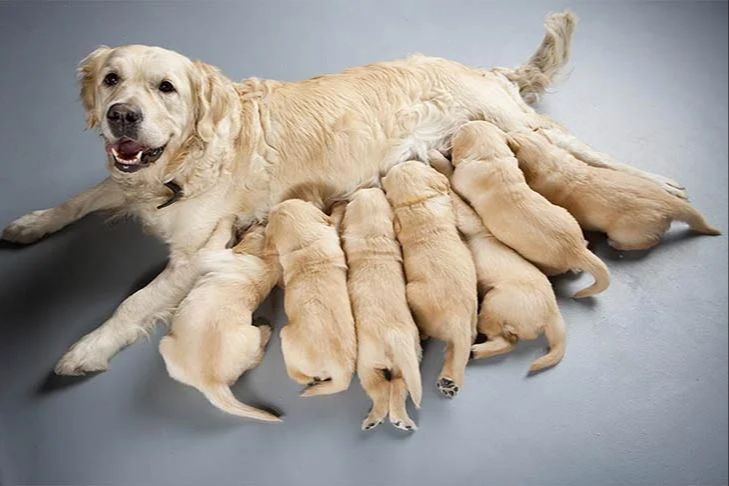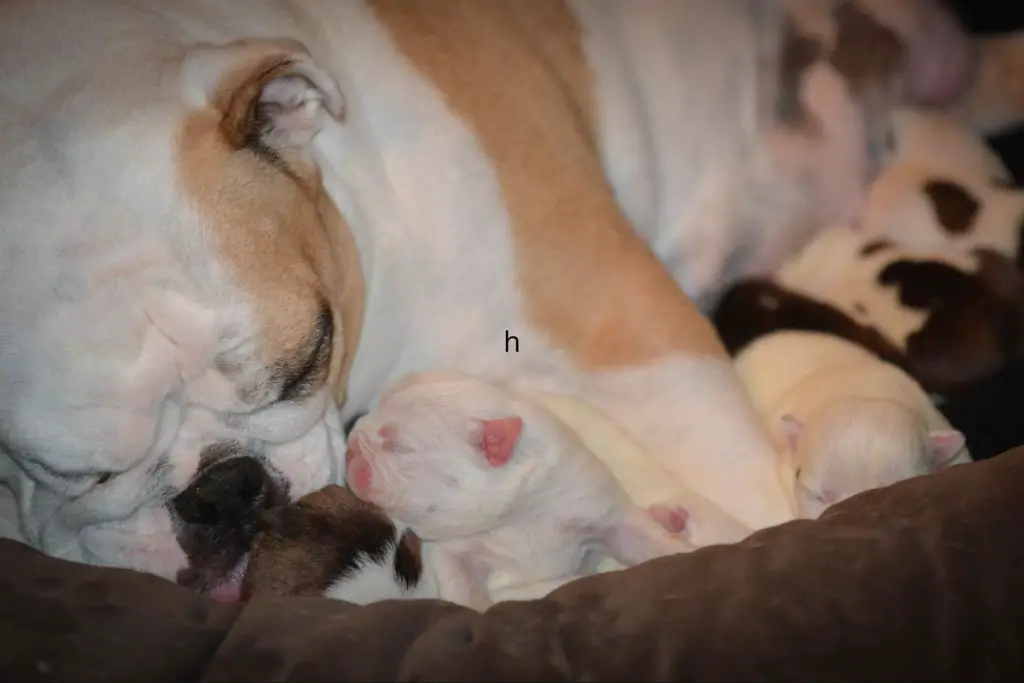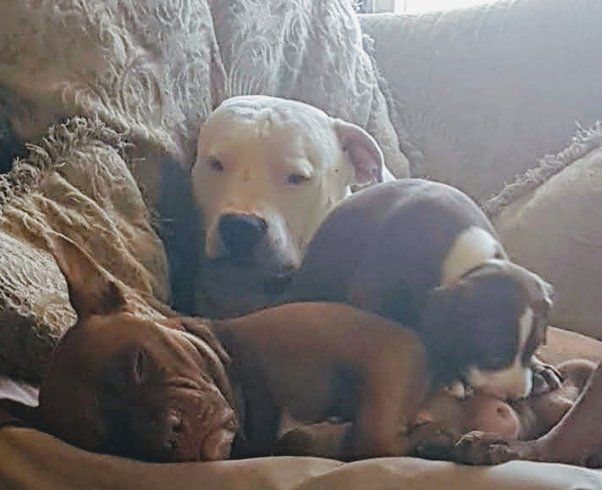Introduction
The bond between a mother dog and her puppies is one of nature’s most special relationships. From the moment they are born, puppies rely completely on their mother for food, warmth, comfort, and protection. For mother dogs, their puppies become the center of their world during the weeks of nursing and caring for their young. This intense bond forms quickly, so it’s understandable that many dog owners wonder: are mother dogs sad when their puppies are sold and leave home?
This is an important question for any dog owner preparing to breed their pet. While puppies eventually outgrow their dependence on mom and venture out on their own, the separation process can be difficult for both parent and pup. Understanding a mother dog’s emotions and perspective allows owners to better prepare her for this transition. Ensuring minimal anxiety benefits both the mother dog’s wellbeing, and helps pave the way for future healthy litters.
The Parent-Puppy Bond
There is a very strong bond that develops between a mother dog and her puppies. This starts immediately from birth, as the mother dog tends to her newborn puppies by cleaning and stimulating them. She allows the puppies to nurse frequently, providing them with nutritious milk and comfort.
As the puppies grow over the next few weeks, the mother dog continues to nurture them. She grooms them, plays with them, and teaches them behaviors. The bonding hormone oxytocin is released in both the mother and her puppies during nursing and social interactions. This helps strengthen their connection.
This parent-offspring bond serves an important purpose. The mother dog feels an instinctive need to care for and protect her young. Her puppies are completely dependent on her for food, warmth, protection, and socialization during the early weeks of their lives.

Signs of Anxiety in Mother Dogs
When puppies are separated from their mother, the mother dog can exhibit various signs of anxiety and distress. This is a natural reaction, as puppies and their mothers form close bonds during the weeks spent nursing. Some common symptoms that a mother dog may display after her puppies are sold include:
- Excessive vocalizations like whining or barking
- Pacing and restlessness
- Loss of appetite or lack of interest in food
- Lethargy or depression
- Searching behaviors – looking for missing puppies
- Excessive licking or nesting behaviors

These signs tend to be most pronounced immediately after the litter has left or within the first few days. The sudden absence of puppies is a big change in the mother dog’s routine and environment. However, the symptoms should gradually dissipate within a week or two as the mother adjusts.
Impact on Nursing and Weaning
The separation of puppies often negatively impacts the nursing schedule and weaning process. When puppies are abruptly taken from their mother, it can disrupt the natural weaning timeline. Mother dogs produce milk according to demand, so removing puppies causes engorgement. The mother dog may continue producing milk while awaiting the return of her puppies, which can lead to mastitis. Removing too many puppies at once can also overwhelm the remaining puppies, as they struggle to nurse efficiently from an engorged mother. This can stall the weaning process.
Ideally, puppies should be weaned gradually over a period of weeks, slowly reducing nursing time. When littermates leave at different times, it makes regulated weaning difficult. The nursing and weaning process requires stability, which is disrupted by premature separations. Removing puppies before they are developmentally ready can lead to poor feeding habits, nutritional deficits, and inadequate immunity from the mother’s milk.
To minimize impact, puppies should stay with the mother for 8-12 weeks and be adopted out in stages rather than all at once. This gives the mother time to properly wean and prevents engorgement. Puppies also need full littermate interaction during nursing to develop healthy feeding behaviors. By keeping litters together through weaning, separations are less stressful for both the mother and puppies.
Stages of Separation
When puppies are first removed from their mother, she will likely exhibit signs of immediate distress and anxiety. Mother dogs may pace nervously, whimper or howl, refuse to eat or drink, and frantically search the area looking for her missing puppies.
This acute distress upon separation usually lasts about 48-72 hours. After this initial period, most mother dogs will enter a depression stage that can last for weeks or months. They may become lethargic, lose interest in food, toys, and walks, and seem generally despondent. Some mother dogs never fully recover from the depression and loss they feel after their puppies are taken away.
Depression and Grief

Dogs can experience depression and grief in response to losing their puppies, similar to human grief responses. The depression may be characterized by lethargy, loss of appetite, and lack of interest in normal activities. Some dogs may even search for their missing puppies or wait by the door expecting them to return.
The grief process in dogs shares similarities with the well-documented stages of human grief. Like humans, dogs may go through denial, yearning, disorganization, and reorganization before accepting the loss. How a dog responds exactly can vary based on their personality and bond with their puppies.
While human and dog grief share some parallels, there are also differences. The grief response in dogs tends to be shorter with the initial intense phases lasting days or weeks rather than months. Dogs are also less likely to show depressed rumination on the loss over an extended time. Their coping mechanisms tend to rely more on instinctual redirection rather than complex meaning-making.
Overall, the depression and grief from losing puppies can be significant for mother dogs. But with time and support, most are able to recover and return to their normal selves. Understanding the grief process in dogs helps owners provide the extra affection and care needed during this difficult transition.
Coping Mechanisms
When mother dogs are separated from their puppies, they may display signs of grief, anxiety, or depression. However, there are various coping methods that can help ease this transition. Some things that may help a mother dog cope with losing her puppies include:
– Increased exercise and playtime. Taking long walks, playing fetch, or engaging in other vigorous physical activity can help relieve stress and anxiety after losing puppies. The exercise releases endorphins which improve mood.
– Exposure to new stimuli. Exploring new places, meeting new dogs, and experiencing novel activities and toys can provide mental stimulation. This helps distract from the feelings of loss.
– Extra affection and attention. Quality time with human family members or canine companions can help a mother dog feel comforted. Giving ample petting, cuddling, grooming, and bonding time helps relieve sadness.
– Allowing grieving. Mother dogs may benefit from having a dedicated grieving period. Providing them space and understanding gives them time to process the separation before resuming normal activity.
– Maintaining routines. Keeping mealtimes, walks, playtimes, and other routines consistent gives a comforting sense of structure amidst the change.
Implementing such coping mechanisms can make the transition easier on mother dogs, helping mitigate negative effects of being separated from their puppies.
Impact on Future Litters
The separation of puppies can potentially impact a mother dog’s behavior with future litters. Some dogs may become more anxious or overly protective when raising subsequent litters. They may spend more time licking and nurturing the new puppies or become distressed if the puppies cry. This hypervigilant behavior is thought to be a result of the distress felt during the previous separation.
Other mother dogs become more aloof or detached with future litters. They may lack interest in nursing or caring for the puppies. This withdrawal is believed to be an emotional defense mechanism to avoid forming attachments and experiencing loss again.
However, many dogs show no noticeable behavioral changes with future litters. They are resilient enough to recover from the separation and parent subsequent litters normally. Their maternal instincts and desire for a bonded litter remain strong despite the previous experience.
With patience, care, and support from the owner, most mother dogs can move past the separation anxiety they feel after puppies are sold. Though an emotionally difficult process, they can go on to have healthy, well-adjusted relationships with future litters.
Preventing Separation Anxiety
There are several ways breeders and owners can help minimize separation anxiety for mother dogs when their puppies go to new homes:
-
Start separating puppies from their mother for brief periods each day, starting at 3-4 weeks old. Slowly increase the duration of separations.
-
Arrange for puppies to be adopted locally or within driving distance, so they can come back for visits.
-
Keep one or two puppies from the litter to remain with the mother, if possible.
-
Place puppies in homes with other dogs so they have companionship.
-
Send the new owners home with a blanket or toy carrying the scent of the mother and littermates.
-
Make sure the mother dog has plenty of attention and interaction with the breeder/owner for comfort.
-
Consider allowing the mother dog to say goodbye to the puppies before they leave.

If the puppies must be sent far away, doing everything possible to keep siblings or mothers together reduces trauma. With care and preparation, mother dogs can stay calm and satisfied despite the puppies leaving.
Conclusion
The bond between a mother dog and her puppies is incredibly strong. As the puppies grow and eventually leave for new homes, the mother dog can experience real grief and sadness from the separation. The research shows that after puppies are weaned, mother dogs may go through a mourning period marked by symptoms like lethargy, loss of appetite, and searching behaviors. The duration and intensity of the mother dog’s grief can be influenced by factors like how abruptly the separation occurs. While dogs are resilient animals, it’s important for breeders and owners to be compassionate during this transition stage. With patience and care, a mother dog’s anxiety can be minimized as she adjusts to no longer having her puppies at home.
In conclusion, separating puppies from their mother can absolutely cause feelings of grief, depression and anxiety. However, there are steps owners and breeders can take to ease this difficult transition for the mother dog. Ensuring the weaning process is gradual, keeping a puppy or two back initially, and providing extra affection and attention, can all help minimize the mother dog’s sadness. By supporting her through this time, we can continue strengthening the human-canine bond while upholding the wellbeing of these beloved family pets.